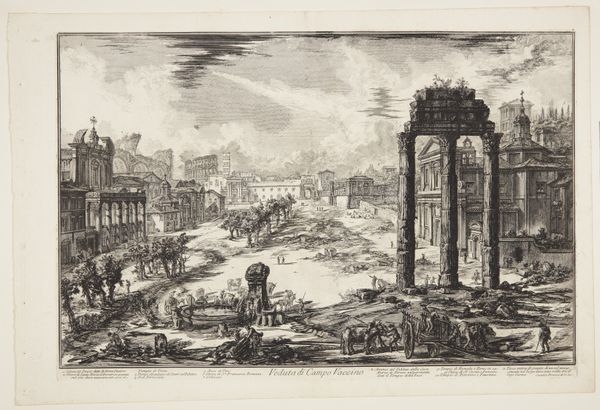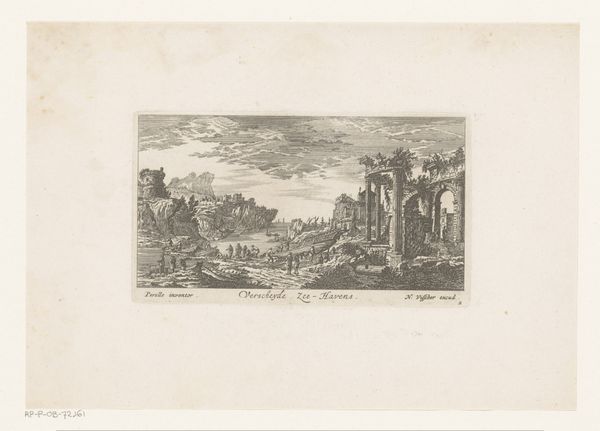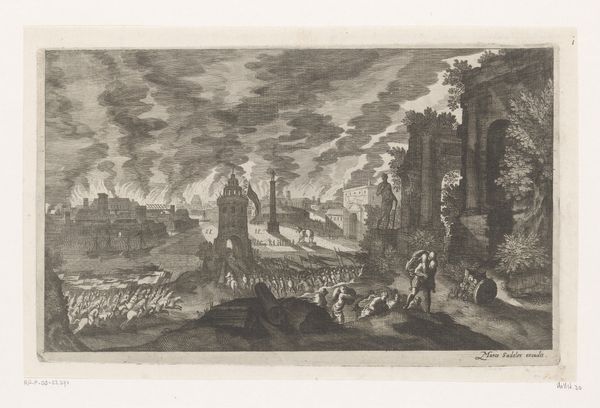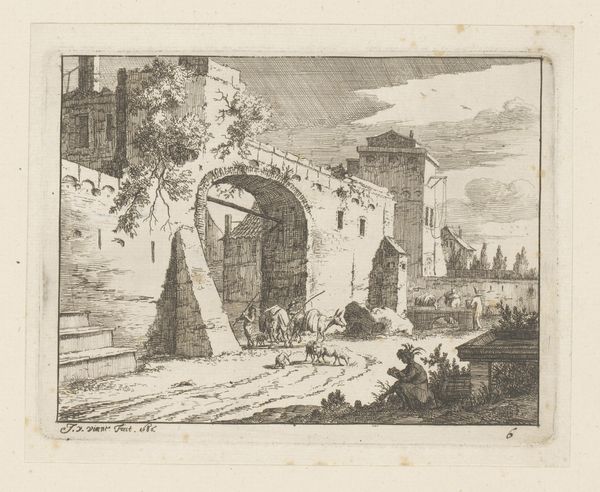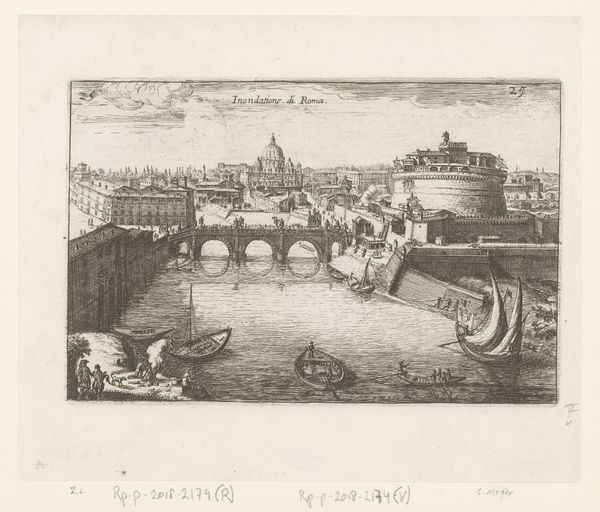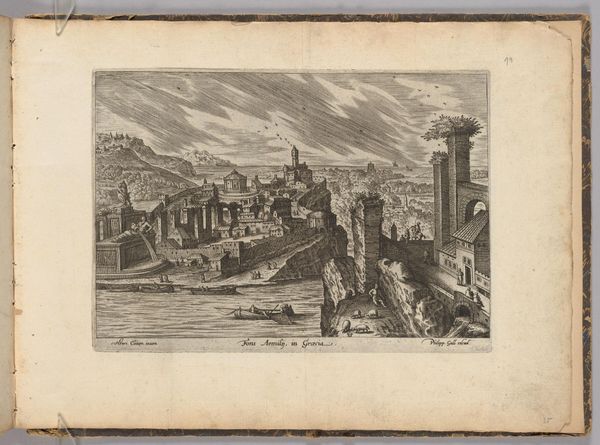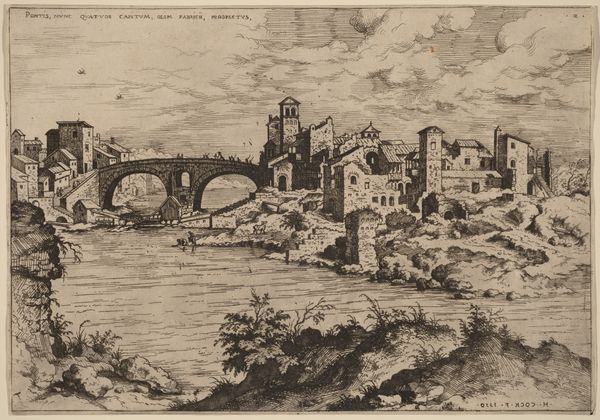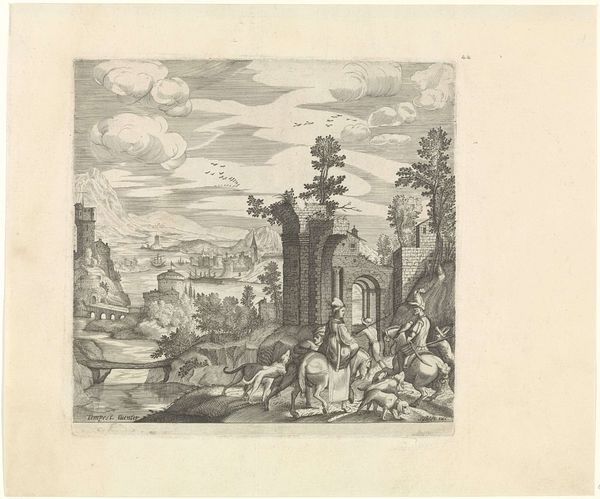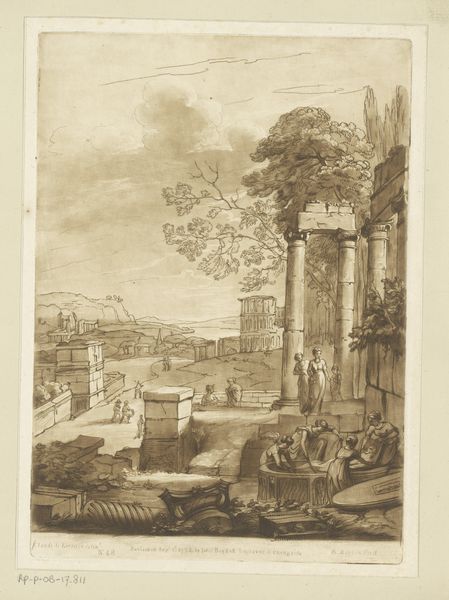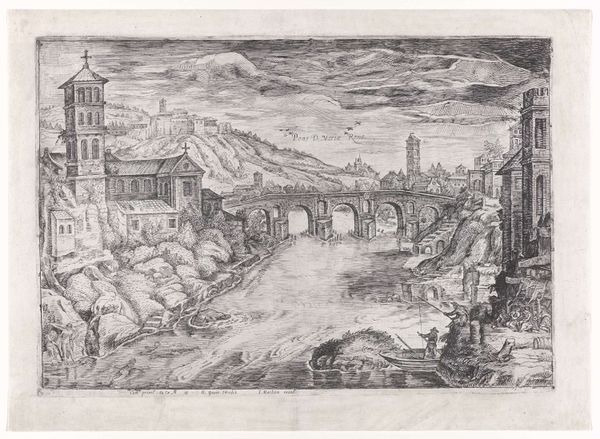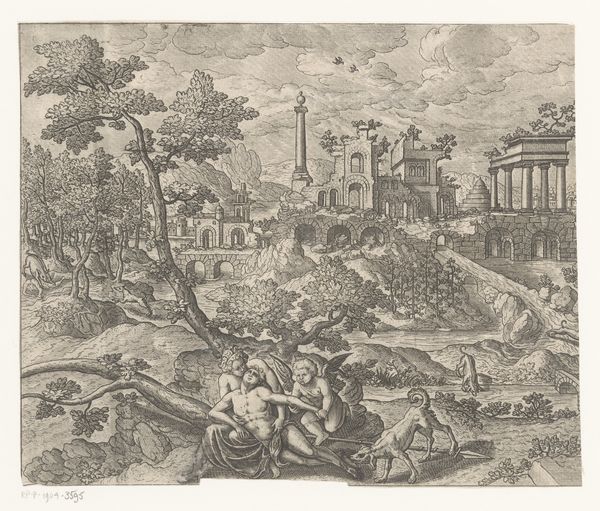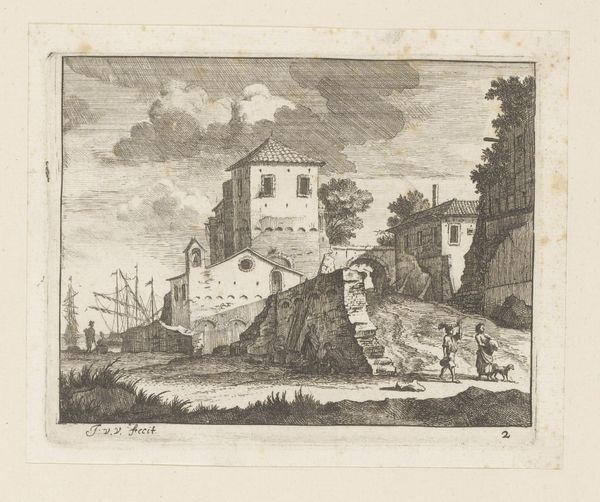
print, etching, engraving
#
baroque
# print
#
etching
#
landscape
#
15_18th-century
#
cityscape
#
engraving
Dimensions: height 208 mm, width 320 mm
Copyright: Rijks Museum: Open Domain
Editor: This is "Tibereiland te Rome" or Tiber Island in Rome, an etching and engraving made by Giuseppe Vasi between 1747 and 1761. It's a pretty detailed cityscape, and the tones are lovely. How do you read this piece, especially in the context of 18th-century Rome? Curator: Well, cityscapes like these, particularly prints, served a crucial role in shaping and disseminating ideas about Rome itself. Consider who was commissioning and consuming such images. Tourists, Grand Tour participants, and those who, for various reasons, couldn’t physically be there, right? So Vasi isn't just depicting an island; he is creating and curating an idea of Rome and Roman antiquity. What details draw your eye? Editor: I'm drawn to the figures within the cityscape, particularly the...the little details like a horse carriage. And all those people walking. Were these images just tourist souvenirs? Curator: That's a good observation. While they functioned as souvenirs, these prints also acted as visual propaganda. Think about the papacy and other wealthy patrons during this time. They were actively involved in urban development, building new structures and restoring older ones. Prints like these, in their proliferation, subtly advertised these interventions. Do you think Vasi would highlight the grittier sides of Roman life? Editor: I imagine it would depend on who was commissioning the work. Still, there's such an ordinary feel with those workers walking the streets, and kids playing by the river... it has a humanistic quality. Curator: Precisely! Even those seemingly ‘ordinary’ people reinforce a particular narrative, carefully placing modern Romans in an ancient landscape. By engaging with Vasi's Tiber Island in Rome, we come to a deeper understanding of Rome’s evolution. Editor: I learned something important – to not underestimate the socio-political powers that shaped these popular images. Curator: Absolutely! By appreciating the artist's choices we are not only analyzing the picture itself but also looking at the motivations of the commissioners.
Comments
No comments
Be the first to comment and join the conversation on the ultimate creative platform.
